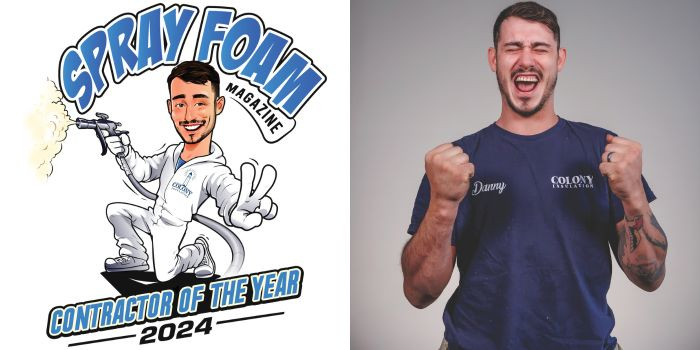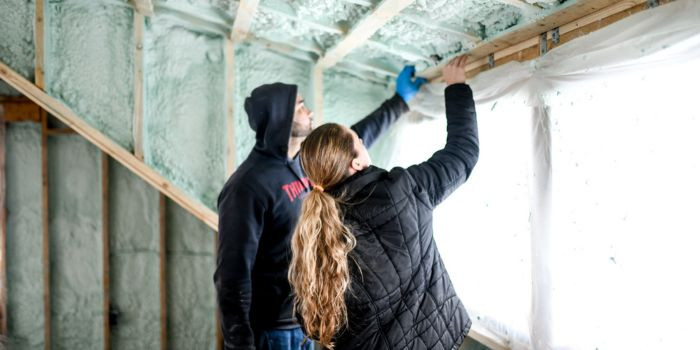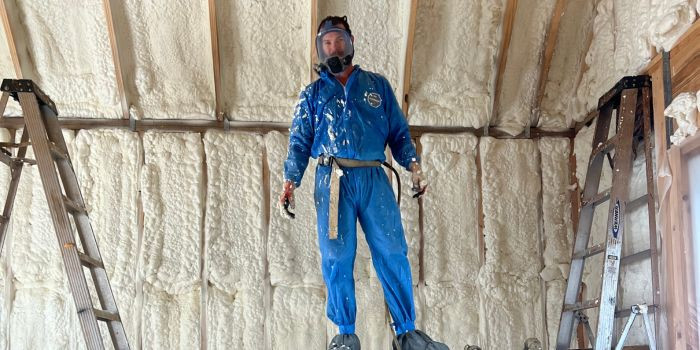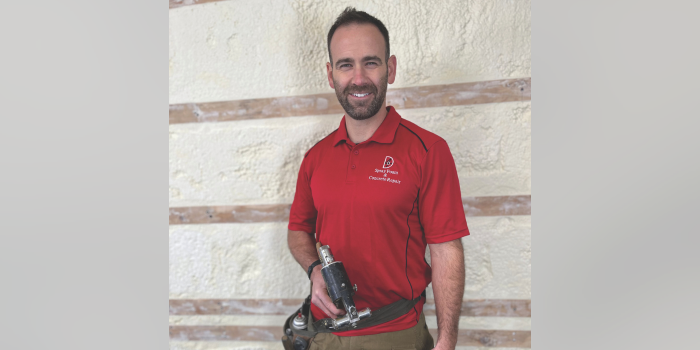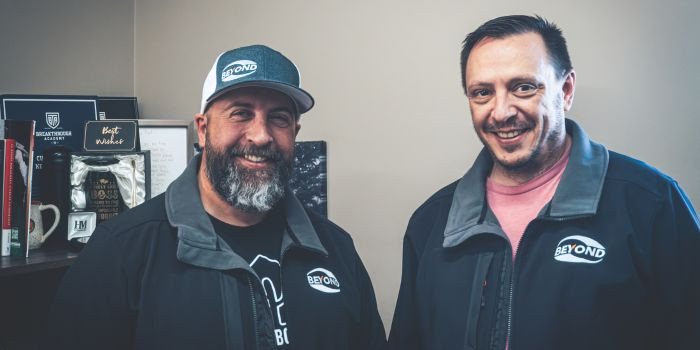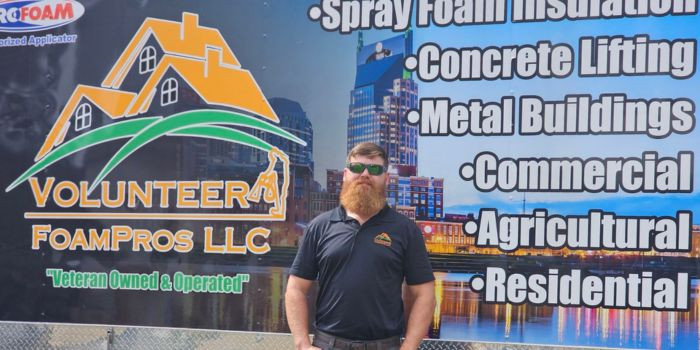Past, Present, and Future
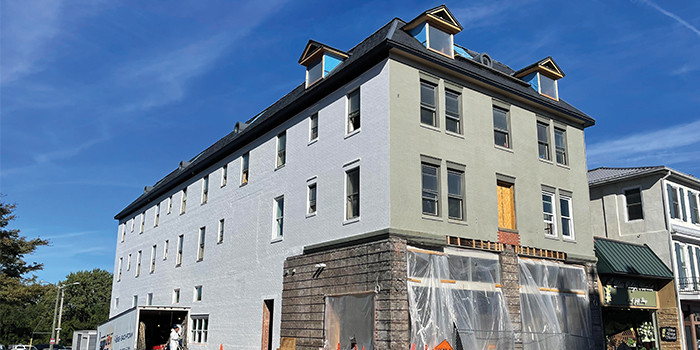

Spray Foam Magazine – Show Issue 2022 – When asked to renovate a historic building, one of the key concerns is maintaining the structure’s integrity. In saying this, we mean trying consciously to restore the building to its original form.
The Kavanaugh Annex building, an annex to the Historical Kavanaugh Hotel in Harrisburg, VA, requested help from Elite Insulation for insulation renovations of the historical main street building.
The building at 157 N. Main St. is undergoing renovations that include sound abatement insulation between all rooms, a closed-cell conditioned attic, roof deck, a rooftop platform for a new HVAC system, new sprinkler, plumbing, and electric systems, and the construction of 25 apartments. There will be four apartments in the basement, five on the first floor with main street retail space, and eight units on the second and third floors, respectively.
All that remains of the original 53-room hotel is the annex. According to documents in the Harrisonburg-Rockingham Historical Society’s Kavanaugh Hotel Collection archive, the inn was built in 1905 by brothers James and Joseph Kavanaugh.
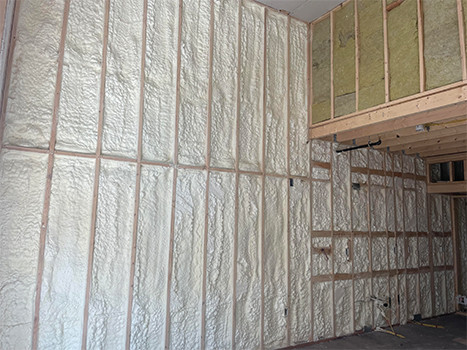
Joseph Kavanaugh died six years after the build, with his brother carrying on the family business, adding 64 more rooms to the hotel by the early 1920s. Other amenities at the Kavanaugh Hotel included a parking garage, restaurants, a coffee shop, and a barbershop. Before the brothers built their structure, there was another hotel on the site. The Virginia Hotel was owned by the father of the Kavanaugh brothers, who purchased the business in 1859. Matchbox, the general contractor, has used historic tax credits to renovate several historic downtown Harrisonburg buildings, including the Icehouse and the Keezell Building.
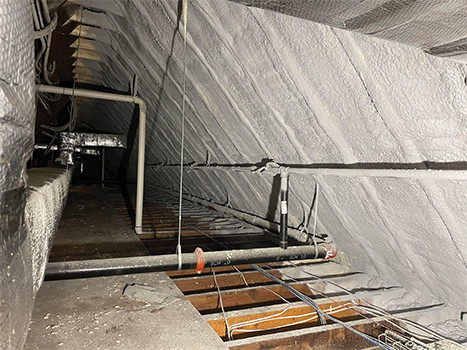
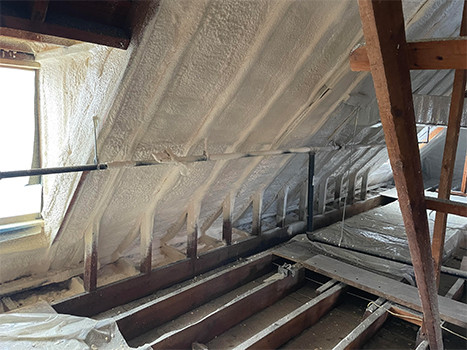
The proprietors’ primary concern was that the renters had a comfortable and quiet environment in which to live and work. Spray foam, with its capacity to seal, insulate, provide sound attenuation, and even provide structural stability, comes into play. Due to the tax credit, the old hardwood flooring in the building must be kept and repaired. The flooring had started to squeak and make a lot of noise. This was intolerable, so the plan was devised to quiet the original floors and limit noise between the residences and the company.
Upon review of the job site, Ken Wells, owner of Elite Insulation, knew what had to be done to help preserve the building. He suggested closed-cell foam for much of the floors. It filled cracks and lent some structural integrity to the original antique flooring, stopping the stairs and floors throughout the building from squeaking. He also suggested open-cell foam to help with sound transmission between apartments, keeping apartment tenants and commercial space tenants happy.
As for the attic preservation, Wells explained how putting traditional insulation in the attic ceiling wouldn’t be nearly as effective as the air barrier provided by the SPF conditioned attic space, which will keep tenants and their customers more comfortable as well as keeping the building’s mechanicals in a conditioned space.
To begin, the Elite Insulation crew sprayed one inch of closed-cell foam directly to the underside of the flooring, providing structural stability and noise reduction. After that, three inches of open-cell foam was applied to help with sound transmission from unit to unit, followed by three inches rockwool batt.
“The difference between the look of the attic before and after is amazing. Ken also took time to make sure that the spray foam didn’t damage any of the original building that needed to be kept for the historical process,” says Barry Kelley, owner of Matchbox.
The attic in the annex is a big space that, due to the location of the building’s mechanicals and a leaking ceiling, required suitable insulation. The best option to insulate this area was to create a closed-cell conditioned attic space. The roof deck was covered with six inches of closed-cell foam and DC-315 as a thermal barrier.
During this large-scale renovation, all employees were required to wear complete PPE. All SPF applicators wore full-face respirators with provided air. Other trades were required to be able to operate in the building during the SPF application, so the Elite Insulation crew had to shut down an entire level on application days, with three high-speed ventilation fans running. One at one end of the building to bring air in, one at the other end to exhaust air, and one in the direct spray area to exhaust air. In addition, three high-powered fans would operate on the floor above, ensuring that any leaks were properly exhausted.
Three days prior to the start of the application, notices were posted informing all workers of the dates and times that each floor would be closed to the public. All conceivable entry and exit points were sealed with poly, red danger tape, and signage on the day of spraying, alerting every one of the limited entry and re-entry dates and hours.
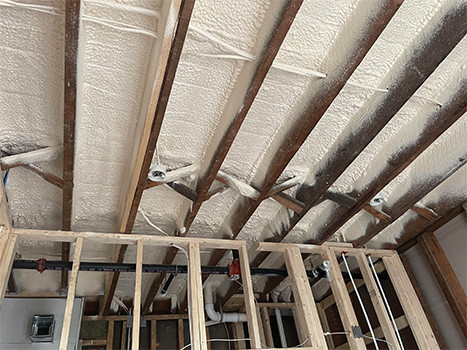
There was always a supervisor on site to make sure that the entrances/exits tape and signage were intact, that the fans were plugged in, and that non-authorized subs stayed off the whole floor that was being sprayed.
“Elite Insulation went beyond expectation on handling safety, posting signage, and kept the building well ventilated so that all subs could work as a team in a safe work environment,” says Kelley. “They adjusted their work schedule to keep the project on time. You better have the right team, with today’s everchanging business climate and material shortages. Ken allowed us to sleep well and complete the mission.”
Surprisingly, there were no strict deadlines for this refurbishment. Material procurement and price hikes were nearly crippling, but thanks to teamwork, all the participating subcontractors were able to pull off the seemingly impossible.
The building owners were originally concerned with providing tenants, both residential and commercial, with a comfortable and quiet environment in which to live and work. Spray foam did not disappoint and again lived up to the fact its unprecedented ability to seal, insulate, dampen sound, and even provide structural stability helped resolve any original concerns for the building’s owners and resulted in a comfortable space for all.
Disqus website name not provided.




